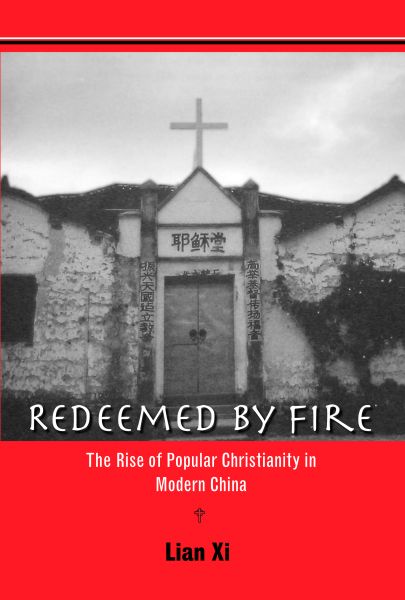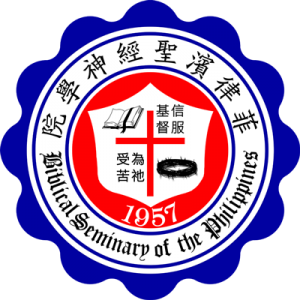Lian Xi, Redeemed by Fire: The Rise of Popular Christianity in Modern China, New Haven, Conn.: Yale University Press, 2010. xv + 333 pp., $45.00 (hardback), ISBN 978-0-300-12339-5 
This is a meticulously researched and carefully written book on what the author calls “popular Christianity” in China from the late nineteenth to the late twentieth century. The author intends to show that the “flourishing of Protestant Christianity in China must be sought outside the missions and among indigenous groups that were chiefly responsible for turning Christianity from an alien faith into a spirited, popular religion” (8). He has used sources ranging from Western mission records and historical documents to church, biographical, and historical publications gathered mainly in China and elsewhere in Asia. Also valuable are the oral interviews and personal recollections of firsthand witnesses. Making the book attractive even to non-academic readers are the biographical sketches of the founders of several indigenous groups. The book meets the challenge of searching for “Chinese” Christianity—nationalistic and home-grown yet rooted in the fundamental, Pentecostal, and millenarian heritage—that developed during the Republican era (1912-1949) and the post-1949 era of Communist rule.
The first chapter begins with the work of Robert Morrison and his convert Liang Afa, whose tract, Good Words to Admonish the Age, introduced Christianity to Hong Xiuquan (1814-1864), leader of the Taiping Heavenly Kingdom, an early aberration of Protestantism. Both the tract and the Taiping movement influenced 128 Journal of Asian Evangelical Theology 17:2 (2013) groups mentioned in succeeding chapters. The author notes other efforts by early Protestant converts aimed at gaining a measure of independence. However, during that era no Chinese church was beyond the “guidance and control” of Western missions. Patriotism alone failed to attract a stable following or adequate funding.
The first durable indigenous Protestant sect that emerged was the True Jesus Church, established in 1917. Its development into the largest independent denomination is the subject of chapter 2. Antiimperialist sentiment was rising, and denunciations of missionary Christianity were mounting. Pentecostalism and apocalyptic convictions spurred the growth of this church. During the 1920s China was battered by natural disasters and the breakdown of political order. This became the seedbed for the rise of a mutual-aid community called the Jesus Family, described in chapter 3. It too was energized by end-time expectations, its members expressing themselves in rapturous worship. Initially localized in Shandong province, it spilled across North China and Manchuria during the 1930s. Many spinoffs of this movement were characterized by trances, visions, tongues-speaking, and prophecies that bore an uncanny resemblance to spirit possession in Chinese popular religion. This so-called Shandong Revival is discussed in chapter 4. Chapters 5, 6, and 7 present three famous personalities of the Chinese church: Wang Mingdao, John Sung, and Watchman Nee. Responding to the liberalism of Western-controlled churches, these preachers shared a fundamentalist message of opposition and a fondness for eschatological schemes in their preaching and teaching. Their influence continues even today, having crossed overseas to the Chinese scattered around Asia.
In chapter 8, with the turmoil of lawlessness and warring factions in the Republican era as a backdrop, the author considers the experience of these groups and their leaders during the Sino-Japanese War (1937-1945). Chapter 9 concludes the narrative with stories of their perseverance under the iron fist of Chairman Mao and the Cultural Revolution (1966-1970). Most of these groups would eventually become institutionalized within the Three-Self framework propagated by the post-Mao regime, and the original messianic Book Review 129 flame would be passed to new spinoff groups such as the Weepers, the Established King, the Lord God Sect, the Disciples’ Society, the Three Grades of Servants, and the Lightning Out of the East.
While focusing on these indigenous groups, the author gives some attention to Western-controlled Chinese churches and the continuing involvement of foreign missionaries. However, he seems to overlook groups in the Southern Fujian area which fall into neither the “popular” nor the mission-controlled category but were actually self-reliant, self-governing, and self-propagating, having evolved during the same time period. (For more on such groups, see David Cheung/Chen Yiqiang, Christianity in Modern China: The Making of the First Native Protestant Church [Brill, 2004].) This disregard leads to an overly polarized view of Chinese churches as either too mission-reliant or so indigenized as to border on the aberrant.
Despite the author’s excellent historical discussion, his theological analyses at times fall short of satisfaction. He seems to equate “anti-foreign” and “indigenous” with “nationalistic,” an adjective he never clearly defines. On the contrary, the mere fact that these groups were homegrown and sometimes their founders were anti-mission does not mean that they were truly nationalistic. Some of them even manifested an aversion to patriotic rites such as bowing before an image of the ruler or praying for the nation.
The author unquestioningly adopts Harvey Cox’s claim that Christianity “began as an apocalyptic sect” (233, quoting Cox, Fire from Heaven, 4), asserting that the first Christians “expressed [themselves] through singing, ‘tongues,’ trances, and possibly dancing” (234). This description certainly fits the early Montanists— but were all early Christians Montanists? The author surmises that Pentecostalism is “a modern incarnation of the same ecstatic spirit” (234). His narrowed focus on Pentecostalism’s millennial component seems to disregard this group’s main focus: the pursuit of an experience with God through baptism in the Holy Spirit. In short, much of the content of his Afterword detracts from the beauty of the material in the previous chapters. Nevertheless, I agree with reviewer Jeff Kyong-McClain that Lian Xi has given us “an engaging and provocative book” (Church History 80, no. 1 [March 130 Journal of Asian Evangelical Theology 17:2 (2013) 2011]: 215).
Redeemed by Fire is indeed a major contribution to the historiography of modern Chinese Christianity.
Reviewed by: Jean Uayan (Ph.D., Asia Graduate School of Theology) is Professor of Global Church History and Library Director at the Biblical Seminary of the Philippines.
